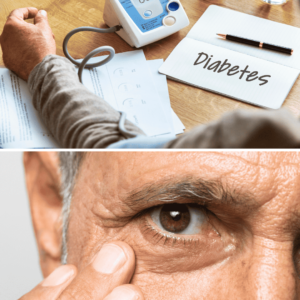
Diabetic Eye Diseases: A Comprehensive Guide
Introduction:
Welcome to my blog, where I, Dr Ashesh Gala, a Senior Ophthalmologist at Netrajyot Eye Care Centre in Mulund, Mumbai, aim to provide valuable information about diabetic eye diseases.
Diabetes can have a significant impact on eye health. Patients, students, working professionals, and parents must be well-informed about these conditions.
Let’s explore diabetic eye diseases in-depth to understand their effects. As we explore this topic, it’s essential to understand the impact of diabetes on eye health and learn how to prevent potential vision complications.
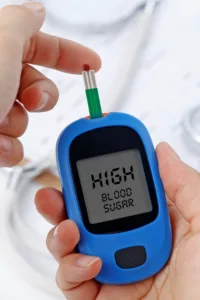
What is Diabetes?
Diabetes is a chronic condition. It affects how your body processes glucose (sugar). High blood sugar levels (HbA1C>6.5) can damage blood vessels, including those in the eyes, leading to various diabetic eye diseases.
Prolonged high blood sugar can damage blood vessels in the eyes, leading to various diabetic eye problems.
It’s essential for individuals with diabetes to manage their blood sugar levels and undergo regular eye exams to detect and prevent potential complications.
Statistics of Diabetic Eye Diseases–
Diabetic eye diseases are a significant concern worldwide.
According to the International Diabetes Federation, approximately one-third of people with diabetes have some form of diabetic retinopathy, the most common diabetic eye disease.
What are Different Diabetic Eye Diseases?
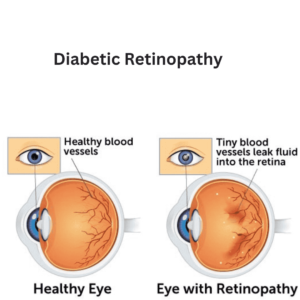
-Diabetic Retinopathy:
Diabetic retinopathy is one of the most common diabetic eye problems. It occurs when high blood sugar levels damage the blood vessels in the retina, the light-sensitive tissue at the back of the eye. This can lead to vision loss if not detected and treated early.
It damages the retina, leading to vision loss if untreated.
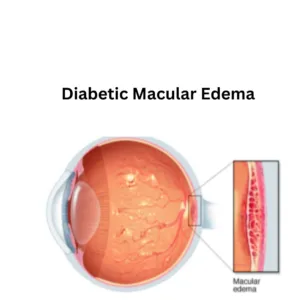
-Diabetic Macular Edema (DME): ( Affecting Central Vision)
DME is a complication of diabetic retinopathy in which fluid leaks into the macula, the central part of the retina responsible for sharp vision. This causes swelling and blurred vision, impacting daily activities like reading and driving.
Swelling in the macula causes blurred vision.
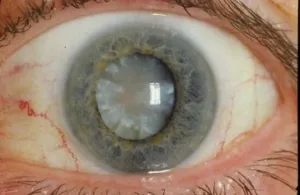
-Diabetic Cataracts: (Clouding of the Lens)
Diabetes can accelerate the formation of cataracts, a condition where the eye’s natural lens becomes cloudy, leading to vision impairment. Managing blood sugar levels can help reduce the risk of developing cataracts.
Clouding of the eye’s lens affects vision clarity.
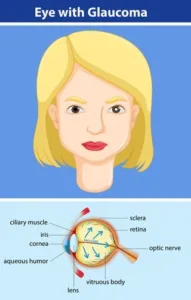
-Glaucoma and Diabetes: (A Dangerous Combination)
People with diabetes have an increased risk of developing glaucoma, a group of eye diseases that damage the optic nerve, often due to increased eye pressure.
Regular eye check-ups are vital to detect glaucoma early and prevent irreversible vision loss.
Increased risk of optic nerve damage, leading to vision loss.
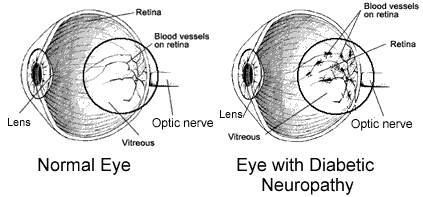
-Diabetic Optic Neuropathy: ( Affecting the Nerves)
Diabetic optic neuropathy occurs when high blood sugar levels damage the optic nerve, which transmits visual information from the eyes to the brain.
This can lead to vision loss, particularly in the peripheral (side) vision.
It damages the optic nerve, causing visual impairment.
Signs & Symptoms of Diabetic Eye Diseases-
Early diabetic eye disease may have no symptoms, making regular eye exams crucial. As the progress of the condition, symptoms may include Blurred or fluctuating vision.
You may experience Dark spots or “floaters” in vision or difficulty seeing in low light. You may feel Eye pain or redness
Diagnosis of Diabetic Eye Diseases–
Diagnosing diabetic eye diseases involves comprehensive eye examinations, including
- Visual acuity test
- Dilated eye exam
- Tonometry to measure eye pressure optical coherence tomography (OCT) to assess retinal thickness
Treatment Options for Diabetic Eye Diseases
The choice of treatment depends on the specific diabetic eye disease and its severity
-Diabetic Retinopathy:
Laser treatment, intraocular injections, or vitrectomy surgery.
-Diabetic Macular Edema:
Anti-VEGF injections or laser photocoagulation.
-Diabetic Cataracts:
Cataract surgery to replace the cloudy lens with an artificial one.
-Glaucoma:
Eye drops, laser surgery, or conventional surgery to lower eye pressure.
-Diabetic Optic Neuropathy:
Treatment aims to manage diabetes and alleviate symptoms.

Coping with Vision Loss:-
If diabetic eye problems lead to vision loss, coping strategies and support are essential:
- Low Vision Aids:
Devices like magnifiers and special lighting can aid in daily tasks. For those experiencing vision loss due to diabetic eye diseases, low vision aids can make a significant difference.
Magnifiers, special lighting, and adaptive devices can enhance independence and daily activities.
- Rehabilitation Services:
Vision rehabilitation programs can teach adaptive skills and enhance independence.
- Emotional Support:
Seek support from family, friends, or counselling to cope with emotional challenges.
How Can We Prevent Diabetic Eye Diseases?

1. Manage Diabetes:
Keep blood sugar levels within the target range through diet, exercise, and medication as advised by your healthcare provider.

2. Regular Eye Exams:
Undergo comprehensive eye examinations at least once a year, or as recommended by your ophthalmologist.

3. Blood Pressure and Cholesterol Control:
Manage blood pressure and cholesterol levels to reduce the risk of diabetic eye complications.

4. Lifestyle Changes:
Adopt a healthy lifestyle with a balanced diet, regular exercise, and avoiding smoking.
Conclusion:-
Diabetic eye diseases are a serious concern for individuals with diabetes, but they can be managed with early detection and proper treatment. Regular eye exams play a vital role in identifying potential issues, allowing timely intervention to preserve vision. Remember to take control of your diabetes and protect your eyesight – your vision is priceless!
Are you aware of the risk of diabetic eye disease? What steps are you taking to protect your eye health? Share your thoughts in the comments below.

